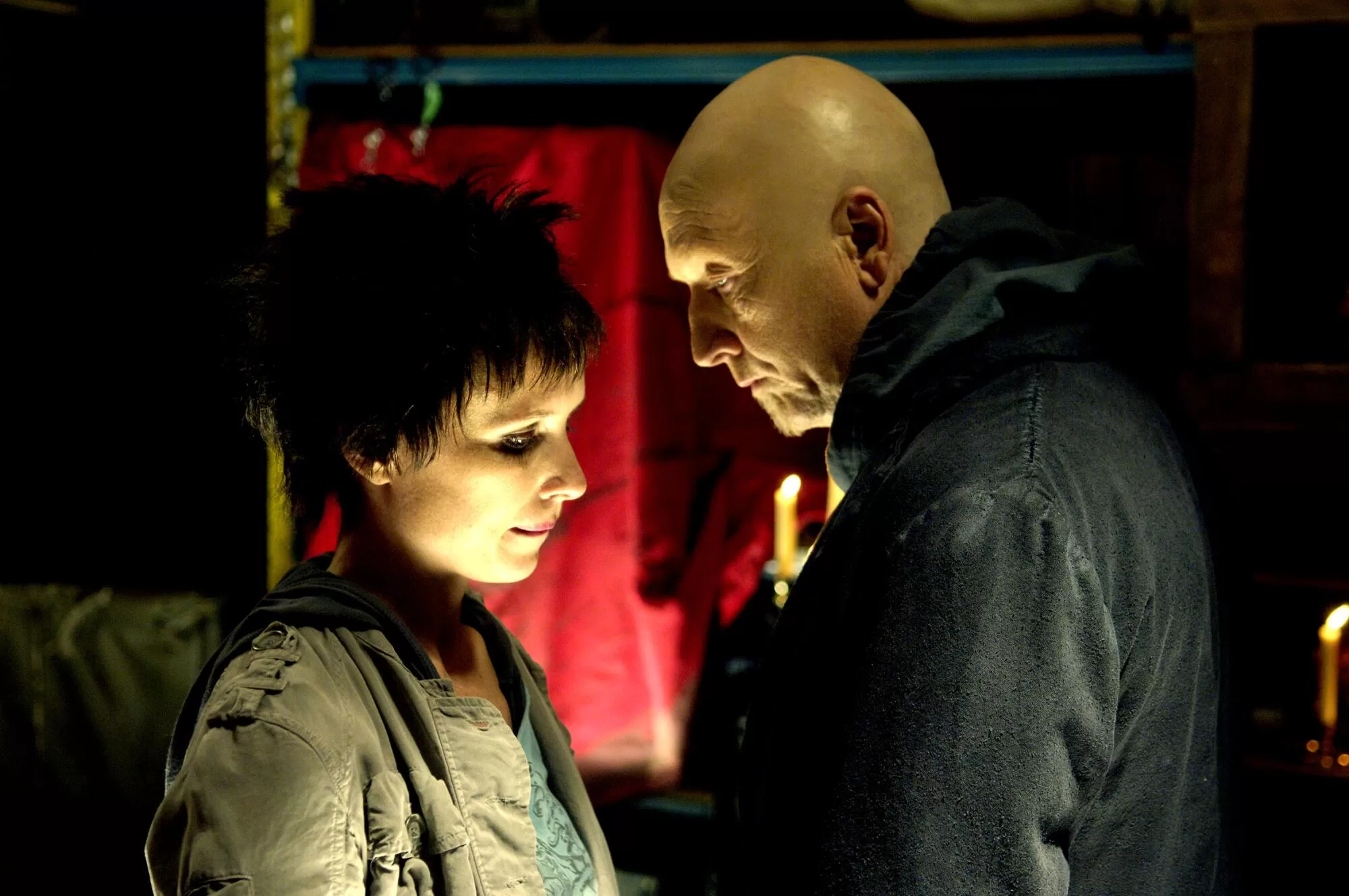I’m sitting across the table from veteran actor Tobin Bell, whose gaze I try to hold. Between us lies a hefty metal briefcase containing nine composition books. One for each “Saw” film he’s appeared in. Two decades of rigorous preparation to play a horror mastermind.
The first page of handwritten notes for 2004’s “Saw” includes a drawn spiral interrogating the likes, dislikes and motivations of John “Jigsaw” Kramer, the methodical, hyper-intelligent, deadly-contraption designer who some call a righteous vigilante and others a ruthless killer.
“Each film is a different story and John’s in a different place,” Bell tells me, wearing a dark red-carpet-ready suit. “Same guy but different circumstances.” When speaking about his morally questionable character’s philosophy, Bell occasionally quotes Kramer’s phrases verbatim, with the same muted ferocity and growly voice as I’ve heard him do on screen.
“Live or die, make your choice,” he adds, sending chills down my spine on what would otherwise be an unremarkable sunny afternoon at the Lionsgate offices in Santa Monica.
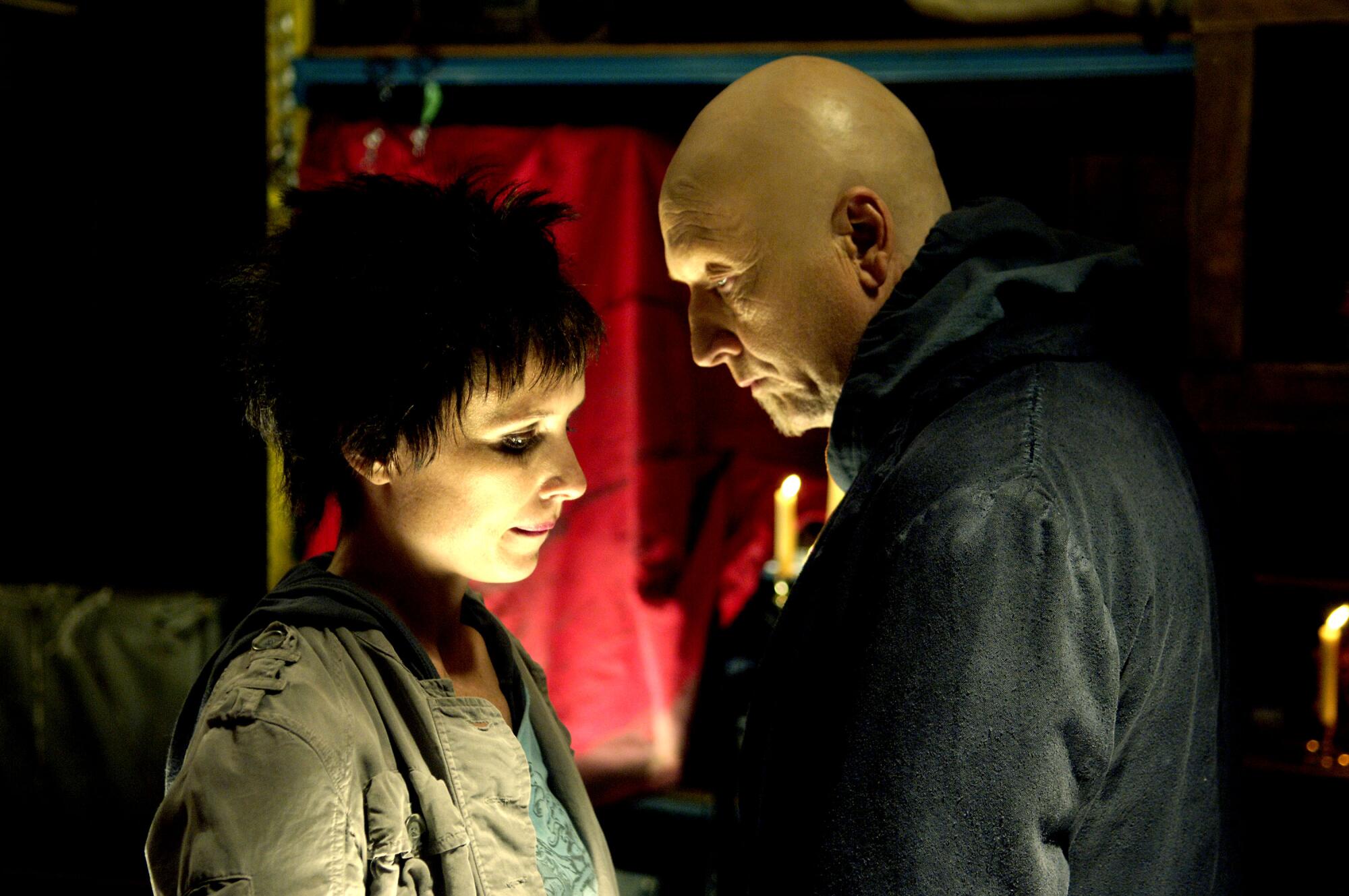
Bell and Shawnee Smith in 2006’s “Saw III.”
(Lionsgate)
As part of this year’s Beyond Fest, Bell will attend a 20th anniversary screening of the first “Saw” in its unrated version on Friday at the Egyptian Theatre. (Later in the month, the chapter that kicked off the gruesome franchise will return to theaters for a limited time.)
Bell, 82, an acting savant who broke into cinema’s foreground in his sixties, explains that the pages are occupied by a series of questions about the character. They start with the most basic details — “Where am I?” for example — and evolve into increasingly specific queries until they form an inverse triangle brimming with insight he’s deciphered on his own.
He learned this method from Oscar-winning actor Ellen Burstyn at the Actors Studio in New York City back in the ’70s and has applied it to every role he’s landed since.
“By the time I get to actually rolling the camera I’m up to 128 answers,” Bell says. “You never know everything, but hopefully I know enough so I don’t go mad trying to play someone I don’t f— know at all.”
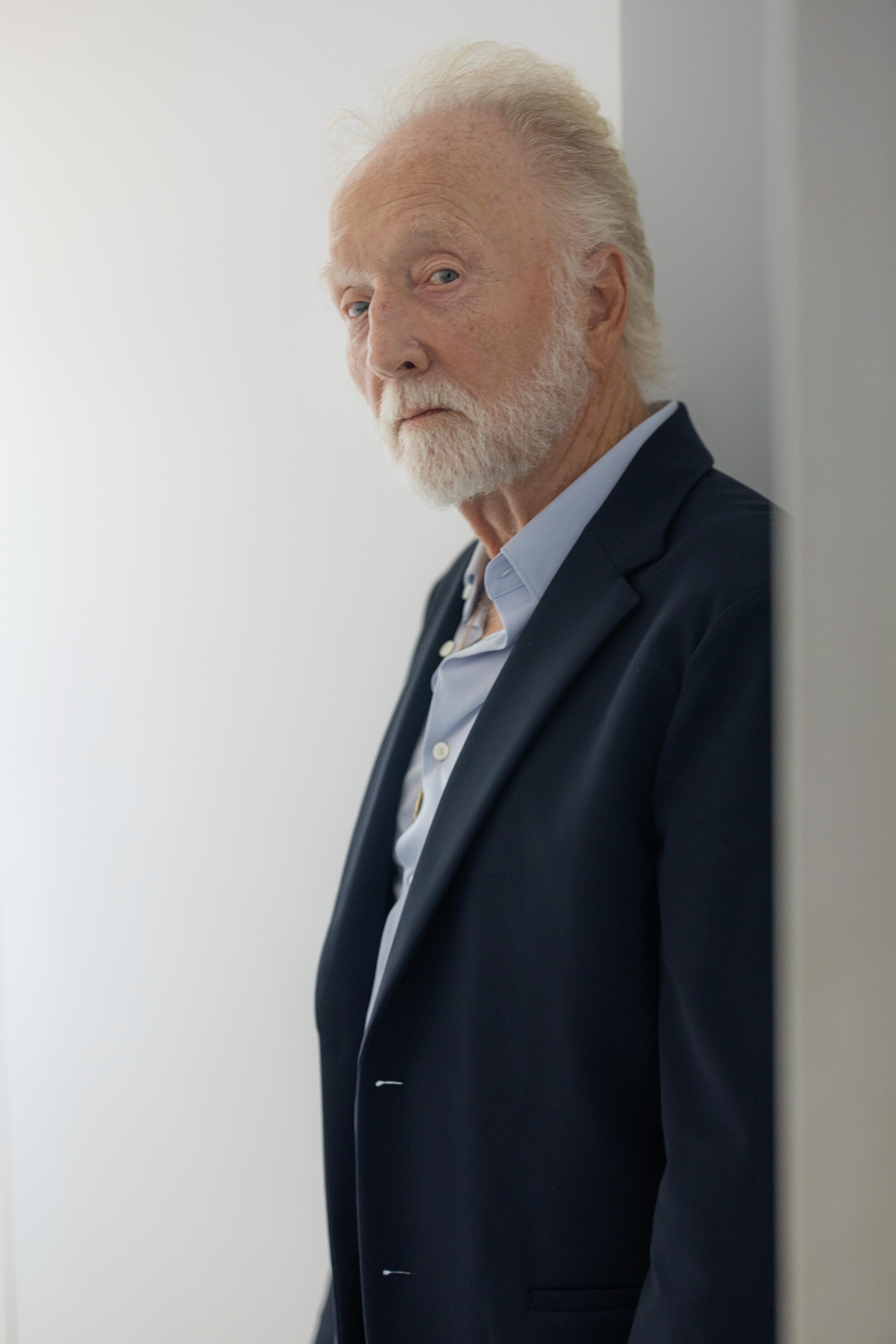
“I wanted to just follow my instinct rather than some kind of idea of a career.” Bell says of his early days that led him to acting.
(Jason Armond / Los Angeles Times)
He has always pursued the kind of lived-in performances of actors such as Montgomery Cliff, Gary Cooper or Spencer Tracy, whose movies Bell says he watched in the theater as a child in his hometown of Weymouth, Mass. every Saturday. “They became their characters,” he says of those screen legends. “You didn’t feel like they were indicating.”
Before stepping into the still-expanding “Saw” saga, Bell had been a working actor for almost three decades, amassing a varied collection of screen credits. Among them were memorable supporting parts in the racially charged crime thriller “Mississippi Burning” and Sydney Pollack’s “The Firm” (two of the four times he’s acted opposite Gene Hackman).
He watched Sidney Lumet direct Paul Newman in “The Verdict” while sitting in the courtroom next to Bruce Willis, another unknown at the time. And he’d experienced the heartbreak of being left on the cutting room floor after working with Martin Scorsese for “Goodfellas.”
“I had a scene with [Robert] De Niro that got cut,” he says. “You’ve got to be prepared for that s— too. I’m now in it only for a handshake and I say, ‘Come into my office.’ ”
Although Bell worked in summer-stock theater as a young man, he attended Boston University to study journalism, with specific aims to work in broadcast television. (In an alternate universe, Jigsaw would have become Walter Cronkite.) It was there that the 1963 assassination of John F. Kennedy would reset the course of his future.
Soon after the tragedy, Bell snuck into a drama-department-only session to hear Hume Cronyn and Jessica Tandy speak about acting as an honorable profession. That day, he concluded the world didn’t need one more talking head and decided to become an artist.
“Kennedy says in a speech to the poet Robert Frost that the artist is the last great defense of freedom, and that the artist has a love-hate relationship with society and keeps us on our toes,” Bell recalls. “I felt I no longer had any responsibility to anything. I wanted to just follow my instinct rather than some kind of idea of a career.”
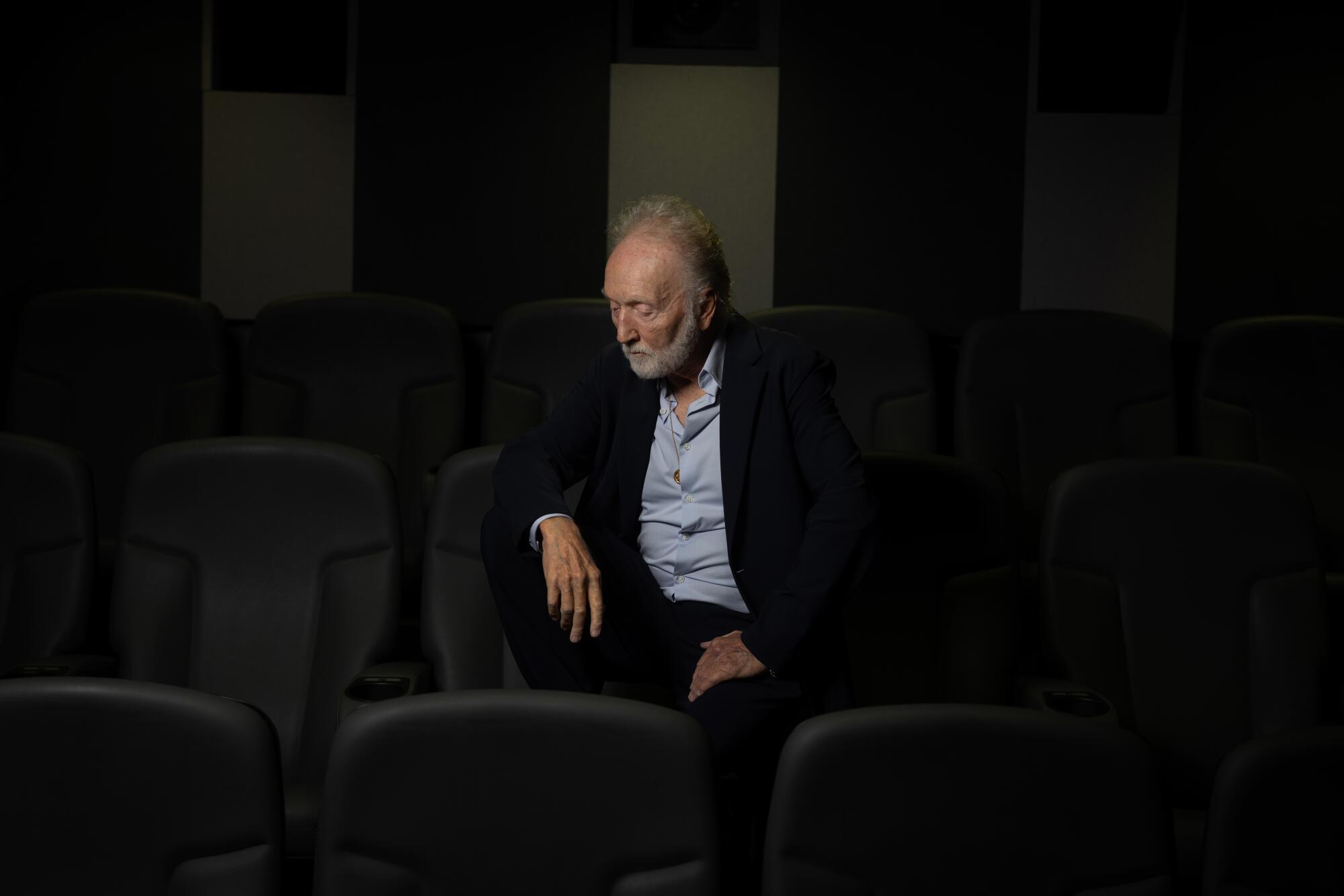
“I always thought I was going to be a romantic leading man,” Bell says. “But an agent also once told me, ‘If you want to work, Tobin, they’ve got to see you as something.’ ”
(Jason Armond / Los Angeles Times)
With a mattress tied to the top of his car, a resolute Bell moved to New York City in 1964 after being accepted at the Neighborhood Playhouse School of the Theatre. Little did he know that in order to chase his acting goals, he would be laying on his back painting the underside of stairwells in a 17-story apartment building to make a living.
“I worked at 53 part-time jobs to keep myself going for more than 20 years in New York,” he says. “I loaded trucks, parked cars at the Hilton garage, bussed tables, waited tables, tended bar. I worked as background and a stand-in in 35 films before I ever spoke.”
His entry into an artistic life was far from linear, however. At one point during his time in New York, Bell married and had a child. In need of steady income, he took a master’s degree in environmental science and for the next six years created educational experiences for school children on the Hudson River, catching, observing and releasing fish.
Throughout it all, Bell held onto a strong conviction. “As much stage work and television as I did in New York, I believed I would become a film actor,” he says. Being part of the Actor Studio, a membership-only organization for professionals, help him keep that dream alive.
“I had a place to belong,” Bell says. “If they took you into the Actors Studio, it made one say to oneself, ‘Maybe I have something. Maybe I’m good enough.’ ”
But the years piled on and one day, a scene moderator at the famed acting workshop suggested that in order to advance his career, Bell should go to Hollywood and play “bad guys.”
“I always thought I was going to be a romantic leading man,” Bell says, remembering the frustration. “But an agent also once told me, ‘If you want to work, Tobin, they’ve got to see you as something.’ ”
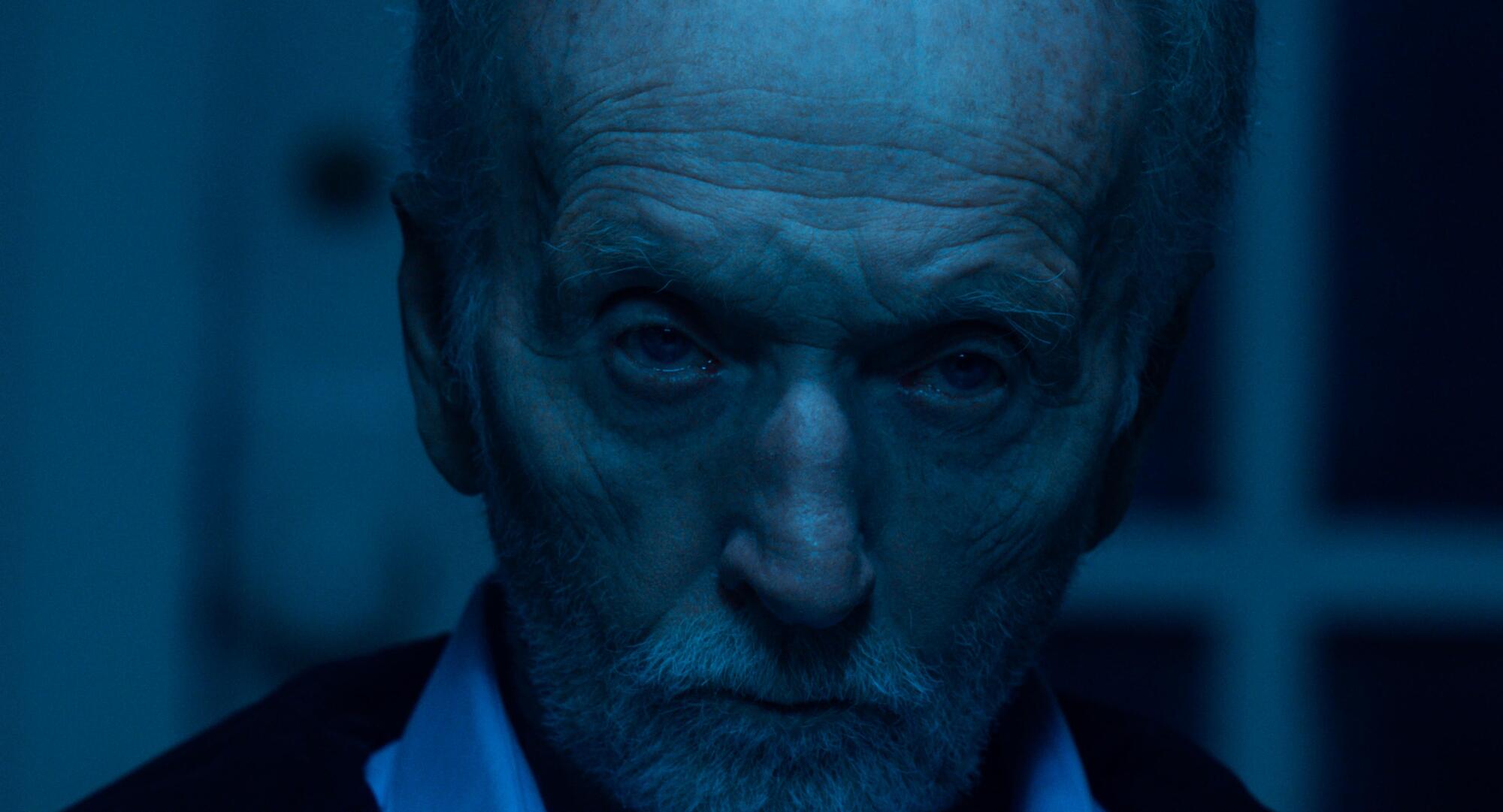
Bell in 2023’s “Saw X,” which earned some of the franchise’s best reviews. “It’s all in the writing,” Bell says.
(Lionsgate)
Then came Alan Parker’s 1988 “Mississippi Burning,” in which Bell played an FBI agent. Bell remembers the late British director asking him, “You know why I had you come in, Tobin?” Parker then pointed at the headshot that Bell was using and said, “Because there’s power in that headshot.” A year later, on the recommendation of his “Mississippi Burning” co-star Kevin Dunn, Bell moved to Los Angeles.
He wasn’t here two weeks before he was cast as a criminal in the pilot episode of the 1990 television series “Broken Badges” that would shoot in Vancouver, Canada. From there, one job after another followed and for the first time he was able to make a living solely working as an actor. The quality of the projects ranged from compelling to forgettable. You may have seen him in one episode of “The Sopranos” as the head of a military academy, or on “Seinfeld” as a no-nonsense record store owner.
“I’ve learned more doing crap than I’ve learned doing good stuff,” he says. “Because you have to try to make it better, more interesting.”
“Saw” would eventually come his way in a fortuitous manner, like most breaks. He’d played Patrick Dempsey’s father on the TV show “Once and Again,” and while his character was a shadowy figure, Bell’s potent, piercing voice cut through. That series and “Saw” shared the same casting director, Amy Lippens, so when the debuting Australian director James Wan needed a voice for Jigsaw’s tapes in “Saw,” she suggested Bell.
It wasn’t until the first sequel, “Saw II” that Bell felt more substantial ownership of the character of John Kramer, whom he describes as a “King Lear-size guy,” making suggestions for the screenplay, including dialogue, which he has continued to do for each new film. And though Bell doesn’t condone Kramer’s actions, he understands his disdain for those he traps.
“John feels that the world has been taken over by mediocre people,” Bell says. “He believes we all have to deal with the consequences of what we create. And that these people are not appreciative of what they have.”
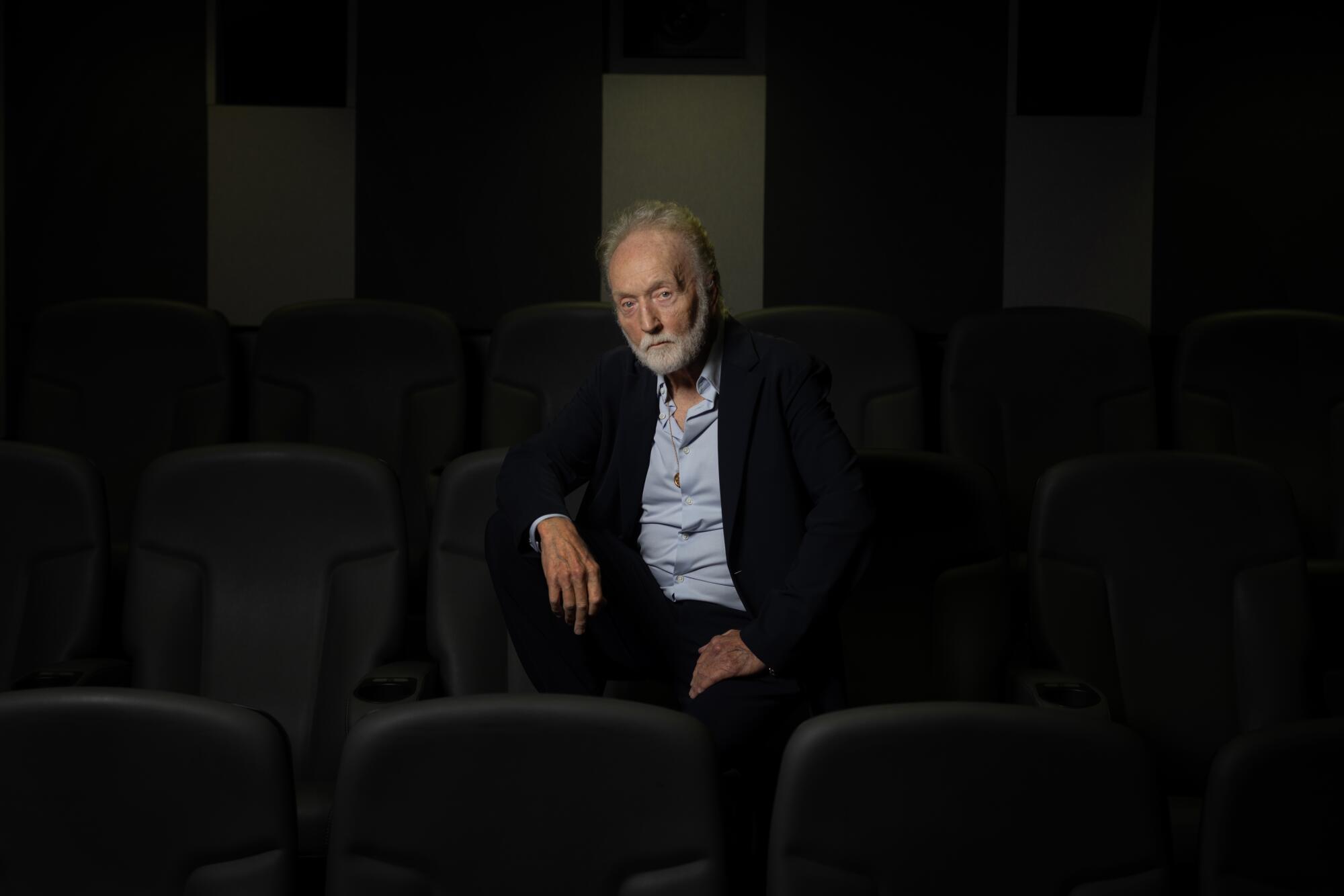
“When I was a kid I didn’t like going to horror films,” Bell says. “As soon as the scary part of a film would come up, I’d be down behind the seat.”
(Jason Armond / Los Angeles Times)
Admittedly, Bell has never been a fan of horror (though he was impressed by the Australian slasher “Wolf Creek”). He prefers historical films and period dramas. But through conventions and casual meetings with horror fans, he’s gained an appreciation for their devotion to the genre and the thoughtfulness of their questions about Kramer’s worldview. He also has his own theory about why people like being scared.
“It’s a visceral experience that you can’t control,” Bell says. “You’re not just sitting, passively watching. All of a sudden you [jumps up from his chair, startled]. Some people like that. Not my cup of tea, necessarily. When I was a kid I didn’t like going to horror films. As soon as the scary part of a film would come up, I’d be down behind the seat.”
When I ask if he’s ever felt pigeonholed in the billion-dollar-grossing phenomenon of “Saw,” Bell suggests that every actor gets pigeonholed, whether as “an ingenue, the girl next door,” or in his case, a “bad guy.”
“If within being pigeonholed I can create a rich acting experience — which is why I became an actor — pigeonhole me, go ahead,” Bell says. “It’s every artist’s responsibility to create within whatever is given to him and it’s my job to change your perception of me. If you want to perceive me in a certain way, maybe you’ll see me differently when you see the next film.”
About the upcoming “Saw XI” slated for release during the fall of 2025, Bell confirmed he’s a main part of it. The hope, he says, after the reinvigorated critical and audience reception to last year’s Mexico-set “Saw X,” is to continue elevating the quality of the series.
“It’s all in the writing,” he adds. Bell believes horror films can be as layered as those of any other genre. “It’s not all one guy outside the screen door with sidelight on him.” And the fans, he says, always want to talk to him about the big moral questions of “Saw,” not the gory particulars.
“I’m really excited about continuing to develop him,” he says. “John Kramer is not done. There’s more to learn.”
Even after 50 years devoted to acting, there’s just as much left to be seen from Bell, who is also writing a memoir and his own screenplays — he’s putting on one of the pieces he’s penned at the Actors Studio soon. As he starts a new composition book for another Jigsaw tale, his own storied life keeps adding pages.
